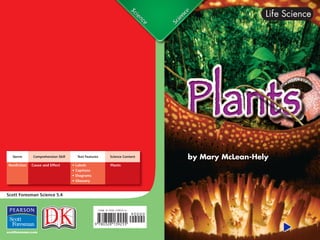Plants have several organs that work together to carry out important functions like making food, transporting water and nutrients, and reproduction. Leaves use photosynthesis to produce sugar from sunlight, carbon dioxide and water. Stems support leaves and transport materials between plant parts. Roots take in water and minerals from the soil. Flowers contain male and female reproductive parts and enable pollination and fertilization to produce seeds, allowing the plant to reproduce.













